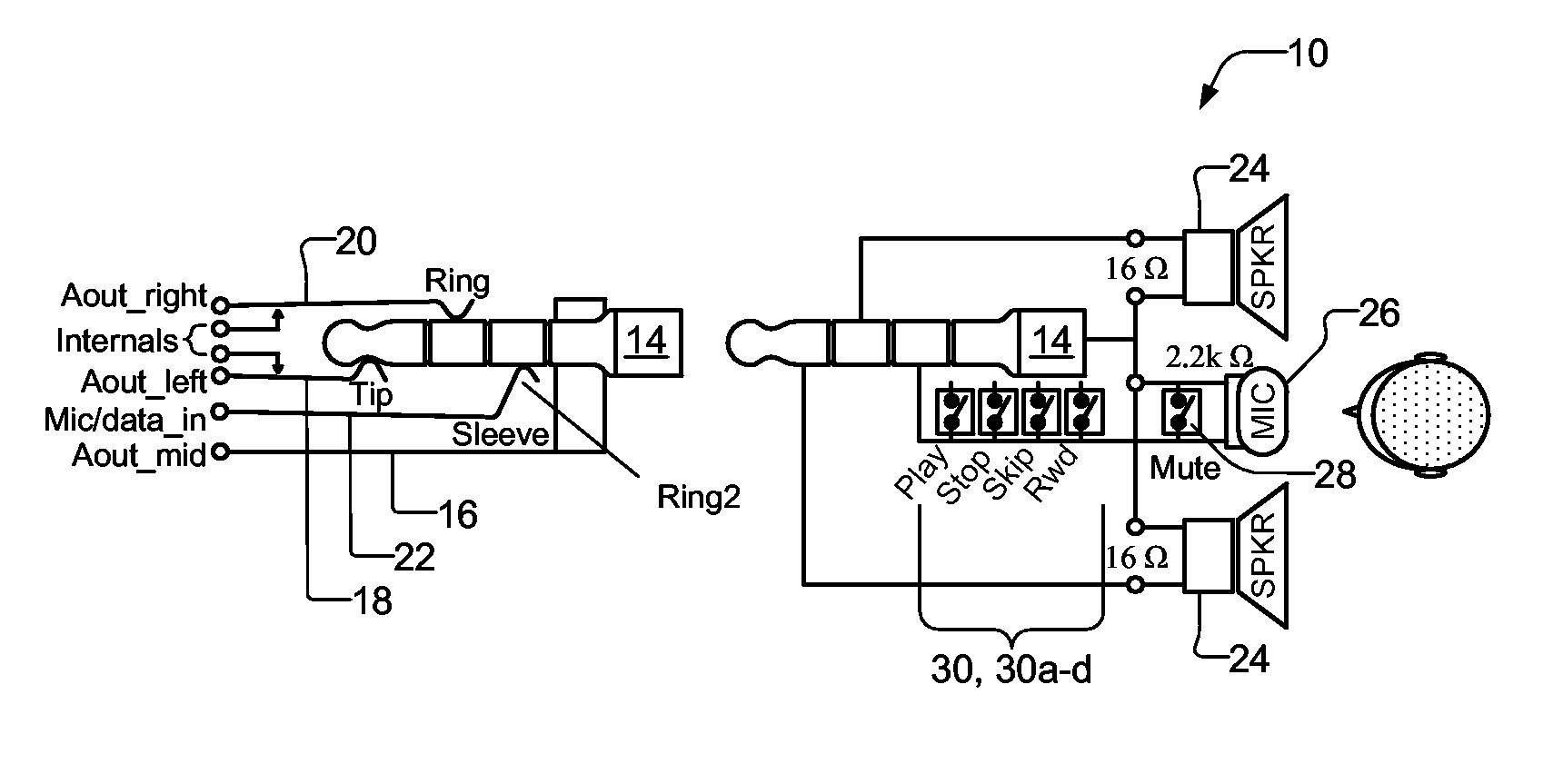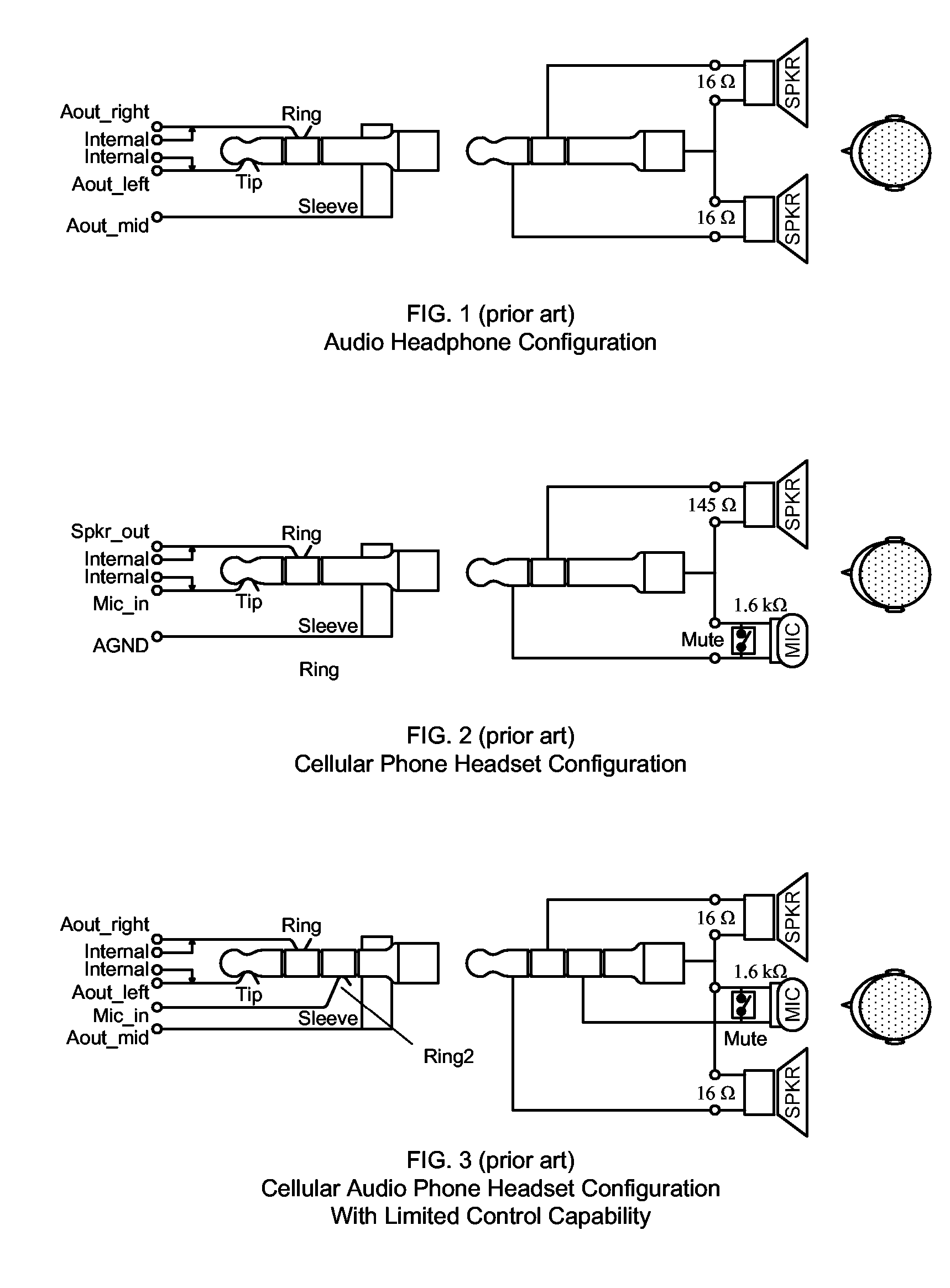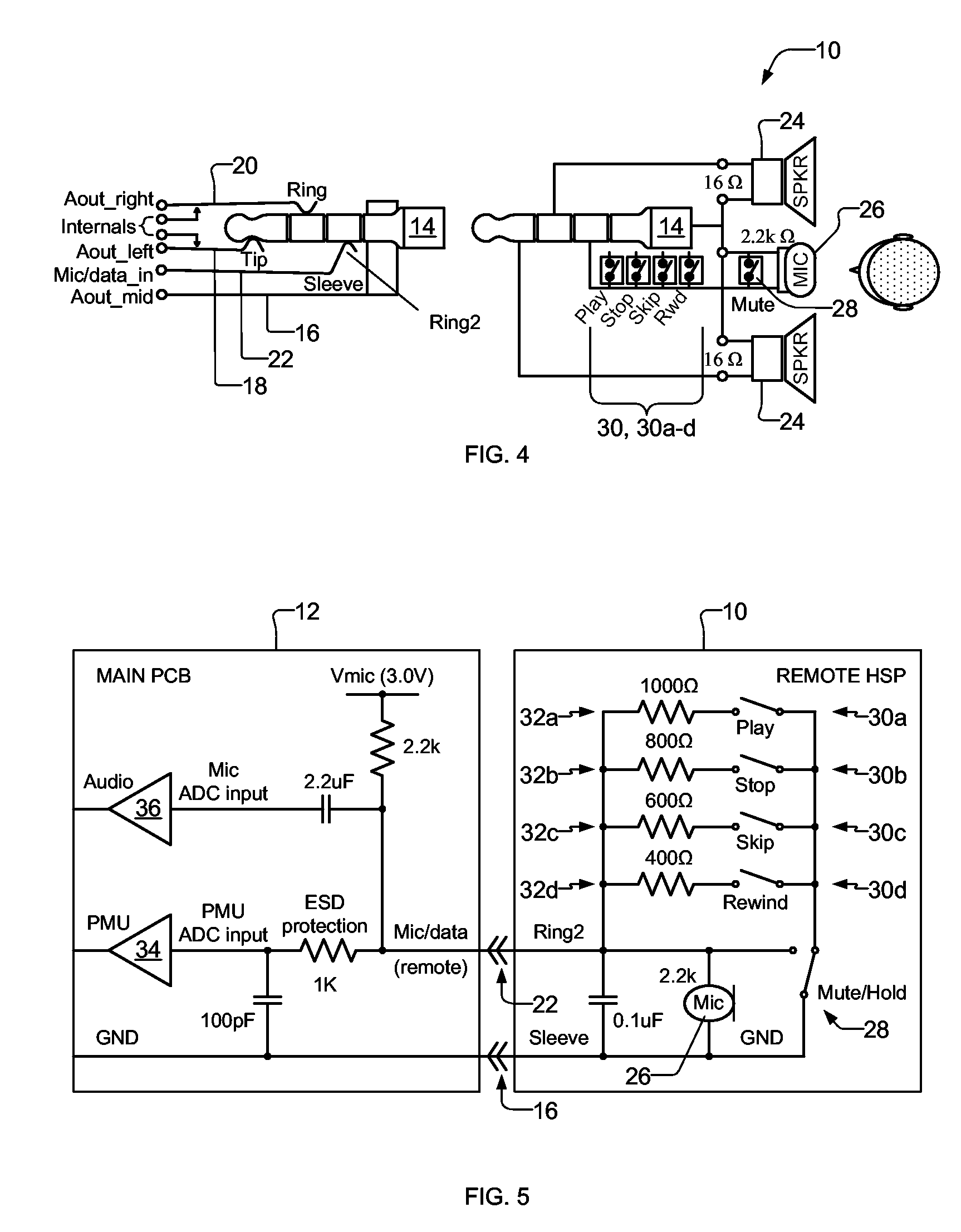Headset with remote control
- Summary
- Abstract
- Description
- Claims
- Application Information
AI Technical Summary
Benefits of technology
Problems solved by technology
Method used
Image
Examples
Embodiment Construction
[0024] A preferred embodiment of the present invention is a headset with remote control. As illustrated in the various drawings herein, and particularly in the view of FIG. 1, preferred embodiments of the invention are depicted by the general reference character 10.
[0025]FIG. 4 is a schematic hardware diagram of a headset phone (HSP 10) in accord with the present invention and FIG. 5 is a schematic circuit diagram of relevant portions of the HSP 10 and of a printed circuit board (PCB 12) of an audio system employing it.
[0026] Turning now to FIG. 4, from comparison with FIG. 3 it can be appreciated that the inventive HSP 10 closely conforms with the standard for combo (4-tap) phone connectors. A combo phone connector 14 is used that has a sleeve tap 16, a tip tap 18, a ring tap 20, and a ring2 tap 22. The combo phone connector 14 connects with typical audio devices, here including a pair of 16Ω speakers 24 and a 2.2 kΩ microphone 26 with a mute switch 28. The component values here ...
PUM
 Login to view more
Login to view more Abstract
Description
Claims
Application Information
 Login to view more
Login to view more - R&D Engineer
- R&D Manager
- IP Professional
- Industry Leading Data Capabilities
- Powerful AI technology
- Patent DNA Extraction
Browse by: Latest US Patents, China's latest patents, Technical Efficacy Thesaurus, Application Domain, Technology Topic.
© 2024 PatSnap. All rights reserved.Legal|Privacy policy|Modern Slavery Act Transparency Statement|Sitemap



